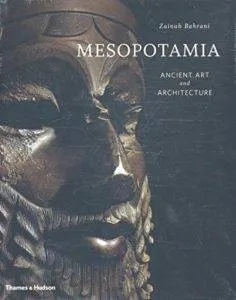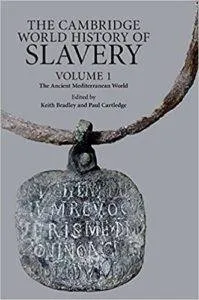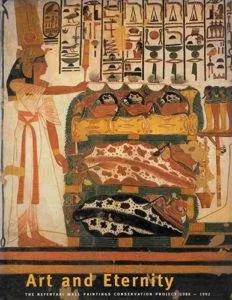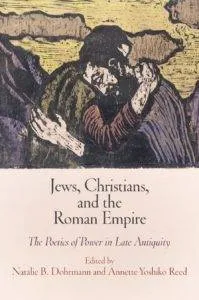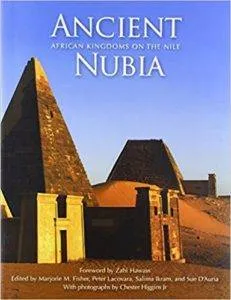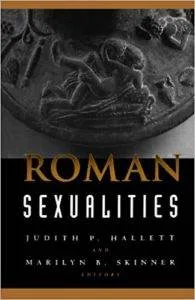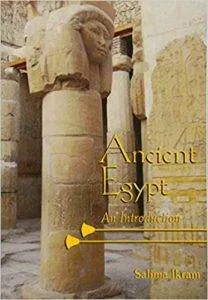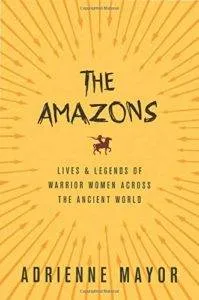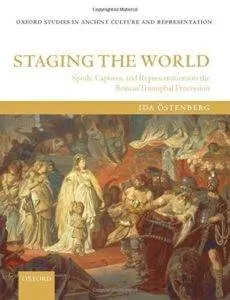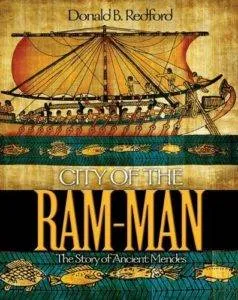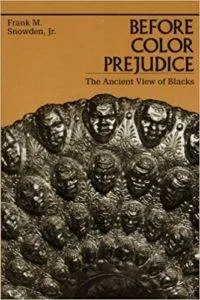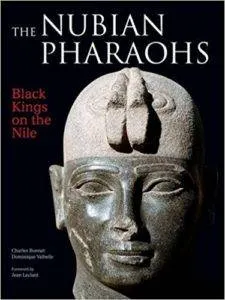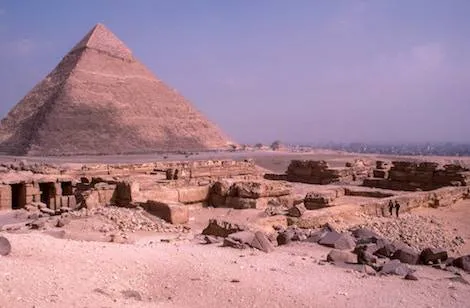
100 Must-Read Books about Ancient History
Rome. Athens. Memphis and Thebes. Ramses II. Nefertiti. Julius Caesar. Cleopatra. Aristotle. Sappho. Cyrus the Great. Democracy. Oligarchy. Republic and Empire.
Societies and people long gone and still they tickle our imagination.
Ancient history as a scholarly endeavor came into existence during the time of the European empires. The imperialists of Great Britain, France, Italy, and Germany looked to the distant past for validation and wrote their history accordingly, resulting in a research field dominated by white men focusing on Rome and Greece.
But things are beginning to change. Books about ancient history and Classical studies are becoming more inclusive. The ancient histories of Persia, India, present-day Iraq and Sudan and their influences on Rome and Greece are being acknowledged. The white dominance among Classicists is being challenged. Inter-disciplinary research projects bring together the disciplines of history and archaeology.
This list of 100 must-read books about Ancient History reflects these changes. Prepare for your TBR list to explode.
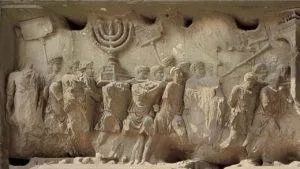
The blurbs for books about ancient history are taken, whole or in part, from amazon.com.
A
1. Richard Alston, Soldier and Society in Roman Egypt: A Social History. Soldier and Society in Roman Egypt provides a complete reassessment of the impact of the Roman army on local societies, and convincingly challenges the orthodox picture. The soldiers are seen not as an isolated elite living in fear of the local populations, but as relatively well-integrated into local communities. The unsuspected scale of the army’s involvement in these communities offers a new insight into both Roman rule in Egypt and Roman imperialism more generally.
2. Jan Assman, The Mind of Egypt: History and Meaning in the Time of the Pharaohs. The Mind of Egypt presents an unprecedented account of the mainsprings of Egyptian civilization-the ideals, values, mentalities, belief systems, and aspirations. Drawing on a range of literary, iconographic, and archaeological sources, renowned historian Jan Assmann reconstructs a world of unparalleled complexity, a culture that, long before others, possessed an extraordinary degree of awareness and self-reflection. Widely acclaimed for his cross-disciplinary approach, Assmann has produced a tantalizing study of an ancient civilization, even as he has opened new directions in historical investigation.
B
3. Zainab Bahrani, Mesopotamia: Ancient Art and Architecture. This book is the first in ten years to present a comprehensive survey of art and architecture in Mesopotamia (modern Iraq, northeast Syria and southeast Turkey), from 8000 B.C.E. to the arrival of Islam in 636 C.E. The book is richly illustrated with c. 400 full-color photographs, maps, and time charts that guide readers through the chronology and geography of this part of the ancient Near East.
4. Anthony A. Barrett, Agrippina: Sex, Power, and Politics in the Early Empire. Agrippina the Younger attained a level of power in first-century Rome unprecedented for a woman. According to ancient sources, she achieved her success by plotting against her brother, the emperor Caligula, murdering her husband, the emperor Claudius, and controlling her son, the emperor Nero, by sleeping with him. Modern scholars tend to accept this verdict. But in his dynamic biography―the first on Agrippina in English―Anthony Barrett paints a startling new picture of this influential woman.
5. Elizabeth Bartman, Portraits of Livia: Imaging the Imperial Woman in Augustan Rome. Driven by the novelty of her role as empress, Livia Drusilla, wife of Augustus, invented a visual language of female rank and status that was to have a profound impact on Roman art. Richly illustrated and including descriptive catalogue entries of more than 110 surviving portraits, as well as the epigraphic testimony for scores of images now lost, Bartman’s study presents unparalleled documentation of Livia’s image during more than sixty years of her public life in Rome.
6. Mary Beard, SPQR: A History of Ancient Rome. In SPQR, an instant classic, Mary Beard examines not just how we think of ancient Rome but challenges the comfortable historical perspectives that have existed for centuries. With its nuanced attention to class, democratic struggles, and the lives of entire groups of people omitted from the historical narrative for centuries, SPQR will shape our view of Roman history for decades to come.
7. Martin Bernal, Black Athena: The Afro-Asiatic Roots of Classical Civilization, vol. 1. In Black Athena, Martin Bernal challenges Eurocentric attitudes by proposing a Revised Ancient Model, which suggests that classical civilization in fact had deep roots in Afroasiatic cultures.
8. Martin Bernal, Black Athena: The Afro-Asiatic Roots of Classical Civilization vol. 2. Volume 2 is concerned with the archaeological and documentary evidence for contacts between Egypt and the Levant on the one hand and the Aegean on the other, during the Bronze Age from c. 3400 B.C. to c. 1100 B.C. These approaches are supplemented by information from later Greek myths, legends, religious cults, and language.
9. Martin Bernal, Black Athena: The Afro-Asiatic Roots of Classical Civilization vol. 3. In the third and final volume of the series, Bernal shows how nearly 40 percent of the Greek vocabulary has been plausibly derived from two Afroasiatic languages—Ancient Egyptian and West Semitic. This evidence, according to Bernal, greatly strengthens the hypothesis that in Greece an Indo-European–speaking population was culturally dominated by Ancient Egyptian and West Semitic speakers.
10. David Bindman & Henry Louis Gates, Jr., Image of the Black in Western Art, Vol. 1. From the Pharaohs to the Fall of the Roman Empire. This volume offers a comprehensive look at the fascinating and controversial subject of the representation of black people in the ancient world. Classic essays by distinguished scholars guide the reader through enormous changes in the field in the wake of the “Black Athena” story.
11. Susan Blundell, Women in Ancient Greece. To read the history of ancient Greece as it has been written for centuries is to enter a thoroughly male world. This book, a comprehensive history of women in the Archaic and Classical Ages, completes our picture of ancient Greek society.
12. Keith Bradley & Paul Cartledge (eds.), The Cambridge World History of Slavery. Vol. 1. The Ancient Mediterranean World. Volume 1 in the new Cambridge World History of Slavery series surveys the history of slavery in the ancient Mediterranean world. In twenty-two chapters, leading scholars explore the centrality of slavery in ancient Mediterranean life using a wide range of textual and material evidence. Non-specialist readers in particular will find the volume an accessible account of the early history of this crucial phenomenon.
13. Pierre Briant (Jane Marie Todd, transl.), Darius in the Shadow of Alexander. The first book ever devoted to the historical memory of Darius III, ruler of the Persian Empire and archenemy of Alexander the Great, who, despite ruling over an empire that stretched from the Mediterranean to India, remains an obscure figure.
C
14. Andrea Carandini (eds.), The Atlas of Ancient Rome. The Atlas of Ancient Rome provides a comprehensive archaeological survey of the city of Rome from prehistory to the early medieval period. Lavishly illustrated throughout with full-color maps, drawings, photos, and 3D reconstructions, this magnificent two-volume slip-cased edition features the latest discoveries and scholarship, with new descriptions of more than 500 monuments.
15. Jennifer Y. Chi & Sebastian Heath (eds.), Edge of Empires: Pagans, Jews, and Christians at Roman Dura-Europos. Strategically located high above the Euphrates River between Syria and Mesopotamia, the city of Dura-Europos was founded around 300 B.C.E. Edge of Empires vividly illustrates the international and pluralistic character of Dura-Europos, highlighting objects that demonstrate the coexistence of multiple religions such as polytheistic cults, Judaism, and Christianity; the great variety of languages spoken by its population; and its role as an international military garrison. The book also includes a map of the region and a detailed site plan of Dura-Europos.
16. Eric H. Cline, 1177 B.C. The Year Civilization Collapsed. In 1177 B.C., marauding groups known only as the “Sea Peoples” invaded Egypt. The pharaoh’s army and navy managed to defeat them, but the victory so weakened Egypt that it soon slid into decline, as did most of the surrounding civilizations. Bringing to life the vibrant multicultural world of these great civilizations, Eric Cline draws a sweeping panorama of the empires and globalized peoples of the Late Bronze Age and shows that it was their very interdependence that hastened their dramatic collapse and ushered in a dark age that lasted centuries.
17. Paul Collins, Mountains and Lowlands: Ancient Iran and Mesopotamia. Mountains and Lowlands is an engaging exploration of the history of ancient Mesopotamia (modern Iraq) and Iran from 6000 B.C. to A.D. 650. Ancient Mesopotamia and Iran are usually treated separately or as part of a much broader ‘Ancient Near East’. However, the developments that lie at the root of our own world—farming, cities, writing, organized religion, warfare—were forged in the tensions and relations between the inhabitants of lowland Mesopotamia (ancient Iraq) and the highlands of Iran.
18. Harriet Crawford, Ur: The City of the Moon God. This account of Ur’s past looks at both the ancient city and its evolution over centuries, as well as its archaeological interpretation in more recent times. The volume also describes the part played by Ur in the Gulf War and discusses the problems raised for archaeologists in the war’s aftermath.
19. Miguel Angel Corzo & Mahasti Afshar (eds.), Art and Eternity: The Nefertari Wall Paintings Conservation Project 1986–1992. This is the final report on the conservation of the wall paintings in the tomb of Queen Nefertari, consort ruler of Ramses II, in the Valley of Queens, Egypt. This highly successful collaborative venture brought together scientists and conservators from all over the world to address the problems facing one of the most beautiful monuments of Ancient Egypt. The painstaking process that saved this cultural treasure in situ is documented here by those most intimately involved in its rescue. Other articles deal with the archaeology of the Valley, the iconography of the tomb, the original techniques and materials used by the artists, photographic documentation of the wall paintings, and literary sources for their study.
20. John Curtis & Nigel Tallis (eds.), Forgotten Empire: The World of Ancient Persia. Encompassing a rich diversity of different peoples and cultures, Persia’s Achaeminid Empire flourished between 550 and 331 B.C. The empire originated with Cyrus the Great (559-530 B.C.) and expanded under his successors, who ruled from the royal capitals of Susa and Persepolis, until at its peak it stretched from the Indus Valley to Greece and from the Caspian Sea to Egypt. Forgotten Empire opens a window onto the wealth and splendor of Persian society—its rich palaces, exquisite craftsmanship, and sophisticated learning.
21. Catherine Chin & Moulie Vidas (eds.), Late Ancient Knowing: Explorations in Intellectual History. In this collection of essays, scholars from a range of disciplines explore the activity of knowing in late antiquity by focusing on thirteen major concepts from the intellectual, social, political, and cultural history of the period. The result is a richly imagined description of how people of this time understood and navigated their world, from travel through the countryside and encounters with demons to philosophical medicine and the etiquette of imperial courts.
22. Vesta Sarkosh Curtis & E. Errington, From Persepolis to the Punjab: Exploring Ancient Iran, Afghanistan, and Pakistan. The phrase ‘from Persepolis to the Punjab’ refers to the vast Iranian empires of the Achaemenids (550-331 B.C.), Parthians (238 B.C.-A.D. 224) and the Sasanians (A.D. 224-651), which extended eastwards through Afghanistan to the north-western borderlands of the Indian subcontinent. The interest of 19th-century European powers in this region has been called ‘the Great Game’ and its effects are explored in this book.
23. V.S. Curtis & S. Stewart (eds.), The Sasanian Era. Seizing power from the previous dynasty—the Parthians—the Sasanians ruled Iran and most of the ancient Near East from 224 until 642 C.E. They are particularly fascinating because of their adherence to Zoroastrianism, an ancient dualistic Iranian religion named after the prophet Zarathustra (or, in Greek, Zoroaster). The volume in question arguably comprises the most complete and comprehensive treatment of the Sasanian civilization yet to be published in English.
24. V.S. Curtis & S. Stewart (eds.), The Age of the Parthians. The Parthians are a fascinating but little-known ancient civilization. This imperial eastern superpower, which lasted for 400 years and stretched from the Hindu Kush to Mesopotamia, withstood the might of Rome for centuries. The Parthians were nomadic horse-warriors who left few written records, concentrating rather on a rich oral and storytelling tradition. In this book, distinguished scholars examine—from a variety of perspectives—the origins of the Parthians, their history, religion and culture, as well as perceptions of their empire through the lens of both imperial Rome and China.
25. V.S. Curtis & S. Stewart (eds.), Birth of the Persian Empire. This book explores the formation of the first Persian Empire under the Achaemenid Persians in the period beginning just before the middle of the 6th century up to the collapse of the Persian Empire following the conquest by Alexander the Great in the late 4th century B.C. Eminent scholars offer a critical approach to some of the traditional interpretations and guide the reader towards a better understanding of the formation of the Persian Empire.
D
26. James Davidson, The Greeks and Greek Love. For nearly two thousand years, historians have treated the subject of homosexuality in ancient Greece with apology, embarrassment, or outright denial. Now classics scholar James Davidson offers a brilliant, unblushing exploration of the passion that permeated Greek civilization. Using homosexuality as a lens, Davidson sheds new light on every aspect of Greek culture, from politics and religion to art and war. With stunning erudition and irresistible wit–and without moral judgment–Davidson has written the first major examination of homosexuality in ancient Greece since the dawn of the modern gay rights movement.
27. Touraj Darayee, Sasanian Persia: The Rise and Fall of an Empire. Of profound importance in late antiquity, the Sasanian Empire is almost completely unknown today, except as a counterpoint to the Roman Empire. In this brilliant and highly readable new history Touraj Daryaee fills a huge gap in our knowledge of world history. He examines the Sasanians’ complex and colorful narrative and demonstrates their unique significance, not only for the development of Iranian civilization but also for Roman and Islamic history.
28. Beate Dignas, Rome and Persia in Late Antiquity: Neighbours and Rivals. The foundation of the Sasanian Empire in Persia in A.D. 224 established a formidable new power on the Roman Empire’s eastern frontier, and relations over the next four centuries proved turbulent. This book provides a chronological narrative of their relationship, supported by a substantial collection of translated sources illustrating structural patterns. Special attention is given to the situation of Arabia and Armenia, to economic aspects, the protection of the frontiers, the religious life in both empires, and the channels of communication between East and West.
29. Nathalie Dohrmann & Annette Yoshiko Reed (eds.), Jews, Christians, and the Roman Empire: The Poetics of Power in Late Antiquity. In histories of ancient Jews and Judaism, the Roman Empire looms large. For all the attention to the Jewish Revolt and other conflicts, however, there has been less concern for situating Jews within Roman imperial contexts; just as Jews are frequently dismissed as atypical by scholars of Roman history, so Rome remains invisible in many studies of rabbinic and other Jewish sources written under Roman rule. Jews, Christians, and the Roman Empire brings Jewish perspectives to bear on long-standing debates concerning Romanization, Christianization, and late antiquity, focusing on the third to sixth centuries C.E.
E
30. David N. Edwards, The Nubian Past: An Archaeology of the Sudan. This cutting-edge synthesis of the archaeology of Nubia and Sudan from prehistory to the nineteenth century A.D. is the first major work on this area for over three decades. Drawing on results of the latest research and developing new interpretive frameworks, the area which has produced the most spectacular archaeology in sub-Saharan Africa is examined here by an author with extensive experience in this field.
31. Catharine Edwards, Death in Ancient Rome. For the Romans, the manner of a person’s death was the most telling indication of their true character. Death in the Roman world was largely understood and often literally viewed as a spectacle. Death revealed the true patriot, the genuine philosopher, even the great artist—and certainly the faithful Christian. Catharine Edwards draws on the many and richly varied accounts of death in the writings of Roman historians, poets and philosophers, including Cicero, Lucretius, Virgil, Seneca, Petronius, Tacitus, Tertullian, and Augustine, to investigate the complex significance of dying in the Roman world.
F
32. Neil Faulkner, Rome: Empire of the Eagles. The Roman Empire is widely admired as a model of civilization. In this compelling new study Neil Faulkner argues that in fact, it was nothing more than a ruthless system of robbery and violence. War was used to enrich the state, the imperial ruling classes, and favored client groups. In the process millions of people were killed or enslaved. Within the empire the landowning elite creamed off the wealth of the countryside to pay taxes to the state and fund the towns and villas where they lived. The masses of people—slaves, serfs and poor peasants—were victims of a grand exploitation that made the empire possible. This system, riddled with tension and latent conflict, contained the seeds of its own eventual collapse.
33. Irving Finkel (ed.), The Cyrus Cylinder: The King of Persia’s Proclamation from Ancient Babylon. Some historical artifacts are destined forever to alter how the ancient world is perceived. The unearthing in today’s Iraq (in 1879) of a clay cylinder-shaped decree from Cyrus the Great, founder of the Achaemenid dynasty of Persia, stands in the same tradition of game-changing discoveries from antiquity as Hammurabi’s famous law code or the intact tomb of the boy-king Tutankhamun. This important volume is the first to discuss the Cylinder and its remarkable history.
34. N.R.E. Fisher, Slavery in Classical Greece. This is an authoritative and clearly written account of the main issues involved in the study of Greek slavery from Homeric times to the fourth century B.C. It provides valuable insights into the fundamental place of slavery in the economies and social life of classical Greece, and includes penetrating analyses of the widely-held ancient ideological justifications of slavery. Throughout, the author shows how political and economic systems, ideas of national identity, work and gender, and indeed the fundamental nature of Greek civilization itself, were all profoundly affected by the fact that many of the Greek city-states were slave societies.
35. Marjorie Fisher, Peter Lacovara, Sue D’Auria, Salima Ikram, Chester Higgins, Jr. (eds.), Zahi Hawass (foreword), Ancient Nubia: African Kingdoms on the Nile. For most of the modern world, ancient Nubia seems an unknown and enigmatic land. Only a handful of archaeologists have studied its history or unearthed the Nubian cities, temples, and cemeteries that once dotted the landscape of southern Egypt and northern Sudan. This book attempts to document some of what has recently been discovered about ancient Nubia, with its remarkable history, architecture, and culture, and thereby to give us a picture of this rich, but unfamiliar, African legacy.
36. Benjamin R. Foster & Karen Foster, Civilizations of Ancient Iraq. In Civilizations of Ancient Iraq, Benjamin and Karen Foster tell the fascinating story of ancient Mesopotamia from the earliest settlements ten thousand years ago to the Arab conquest in the seventh century. Ancient Iraq was home to remarkable achievements—the world’s earliest cities and empires, writing and literature, science and mathematics, monumental art, and innumerable other innovations. Civilizations of Ancient Iraq is an essential guide to understanding Mesopotamia’s central role in the development of human culture.
G
37. Adrian Goldsworthy, The Fall of Carthage: The Punic Wars 265–146 B.C. The Punic Wars between Carthage and Rome were among the greatest conflicts of the ancient world, ending in Carthage’s destruction at the hands of Rome in 146 B.C.E. Thanks to one of the finest historians of our time, this sweeping saga comes to life anew for modern audiences. The cast of endlessly fascinating characters includes the generals Hannibal and Scipio, as well as treacherous chieftains, beautiful princesses, scheming politicians, and tough professional warriors.
38. Adrian Goldsworthy, Antony and Cleopatra. A masterfully told—and deeply human—story of love, politics, and ambition, Adrian Goldsworthy’s Antony and Cleopatra delivers a compelling reassessment of a major episode in ancient history. In this remarkable dual biography of the two great lovers of the ancient world, Goldsworthy goes beyond myth and romance to create a nuanced and historically acute portrayal of his subjects, set against the political backdrop of their time. A history of lives lived intensely at a time when the world was changing profoundly, the book takes readers on a journey that crosses cultures and boundaries from ancient Greece and ancient Egypt to the Roman Empire.
39. Martin Goodman, Rome and Jerusalem: The Clash of Ancient Civilizations. A magisterial history of the titanic struggle between the Roman and Jewish worlds that led to the destruction of Jerusalem.
40. Lester L. Grabbe, Ancient Israel: What Do We Know and How Do We Know It? In Ancient Israel Lester L. Grabbe sets out to summarize what we know through a survey of sources and how we know it by a discussion of methodology and by evaluating the evidence. Grabbe focuses on original sources, including inscriptions, papyri, and archaeology. He examines the problems involved in historical methodology and deals with the major issues surrounding the use of the biblical text when writing a history of this period. Grabbe’s clarity of style makes this book eminently accessible not only to students of biblical studies and ancient history but also to the interested lay reader.
41. Peter Green, Alexander the Great and the Hellenistic Age. The book begins with the personality and achievements of Alexander the Great, and continues with the military and political violence of the successor-kingdoms that fought over his inheritance. This era saw many important developments—a shift from the oral to the written; a move from the public to the private and a new individualist ethos; a huge growth in slavery; a growing gap between rich and poor; a growing taste for luxury.
42. Ogden Goelet & Raymond Faulkner, The Egyptian Book of the Dead. Written and illustrated some 3,300 years ago, The Egyptian Book of the Dead is an artistic rendering of the mysteries of life and death. For the first time since its creation, this ancient papyrus is now available in full color with an integrated English translation directly below each image.
H
43. Judith P. Hallet & Marilyn B. Skinner (eds.), Roman Sexualities. This collection of essays seeks to establish Roman constructions of sexuality and gender difference as a distinct area of research, complementing work already done on Greece to give a fuller picture of ancient sexuality. By applying feminist critical tools to forms of public discourse, including literature, history, law, medicine, and political oratory, the essays explore the hierarchy of power reflected so strongly in most Roman sexual relations.
44. Judith Harris, Pompeii Awakened: A Story of Rediscovery. On that fateful day in A.D. 79 the city of Pompeii was lost, and in time its location, its inhabitants, and even its name were buried and forgotten. Not until 1755 did it emerge from its layer of volcanic rock, and the impact of that discovery was immediate and far-reaching. Judith Harris has delved into ancient diaries and descended deep underground to assess the latest excavations. As the sleeping city re-awakens in her hands, Pompeii casts its spell once more, bewitching those who seek to unearth its buried secrets.
45. Zahi Hawass, Mountains of the Pharaohs: The Untold Story of the Pyramid Builders. The great pyramids of Giza have intrigued humanity for thousands of years. Recent cutting-edge research has uncovered information about how and why they were built. In Mountains of the Pharaohs, Zahi Hawass, a world-renowned archaeologist, weaves the latest archaeological data and an enthralling family history into a spellbinding narrative.
46. Zahi Hawass, Silent Images: Women in Pharaonic Egypt. Our endless fascination with ancient Egypt owes much to the beauty of the tomb paintings, statuary, temple reliefs, and other magnificent artworks that are the legacy of this remarkable culture. But despite the multitude of objects and texts that have survived, questions abound, particularly about the true role of women in Egyptian society. This wonderfully illustrated, brilliantly researched book draws on unpublished material from author Zahi Hawass’ own excavations as well as new analyzes of older evidence to penetrate the silent images and paint an astonishing picture of women’s lives.
47. Richard Hingley & Christina Unwin, Boudica: Iron Age Warrior Queen. Boudica, or Boadicea, queen of the Iceni, led a famous revolt against Roman rule in Britain in 60 C.E., throwing the province into chaos and sending a shock wave across the empire. Boudica. Iron Age Warrior Queen is an account of what we know about the real woman, from classical literature, written for the consumption of readers in Rome, and from the archaeological evidence. It also traces her extraordinary posthumous career as the earliest famous woman in British history.
48. Tom Holland, Rubicon. In 49 B.C., the seven hundred fifth year since the founding of Rome, Julius Caesar crossed a small border river called the Rubicon and plunged Rome into cataclysmic civil war. Tom Holland’s enthralling account tells the story of Caesar’s generation, witness to the twilight of the Republic and its bloody transformation into an empire. Combining verve and freshness with scrupulous scholarship, Rubicon is not only an engrossing history of this pivotal era but a uniquely resonant portrait of a great civilization in all its extremes of self-sacrifice and rivalry, decadence and catastrophe, intrigue, war, and world-shaking ambition.
49. Keith Hopkins & Mary Beard, The Colosseum. In The Colosseum we learn the details of how the arena was built and at what cost; we are introduced to the emperors who sometimes fought in gladiatorial games staged there; and we take measure of the audience who reveled in, or opposed, these games. The authors also trace the strange afterlife of the monument—as fortress, shrine of martyrs, church, and glue factory. Why are we so fascinated with this arena of death?
50. Janos Harmatta, B.N. Puri & G.F. Etemadi, History of Civilizations of Central Asia: Vol. II. The Development of Sedentary and Nomadic Civilizations, 700 B.C. to A.D. 250. Volume 2 of a series that chronicles the ancient history of Central Asia.
I
51. Salima Ikram, Ancient Egypt: An Introduction. Beginning with a geographical overview that explains the development of Egyptian belief systems as well as its subsequent political development, this book examines methodology, the history of the discipline of Egyptology, religion, social organization, urban and rural life, and death. It also includes a section on how people of all ranks lived. Lavishly illustrated with many unusual photographs of rarely seen sites that are seldom illustrated.
52. Salima Ikram, Death and Burial in Ancient Egypt. Death, burial, and the afterlife were as important to the ancient Egyptians as how they lived. This well-illustrated book explores all aspects of death in ancient Egypt, including beliefs of the afterlife, mummification, the protection of the body, tombs and their construction and decoration, funerary goods, and the funeral itself. It also addresses the relationship between the living and the dead, and the magico-religious interaction of these two in ancient Egyptian culture.
J
53. Sandra R. Joshel, Slavery in the Roman World. Rome was a slave society. Slavery fundamentally shaped Roman society and culture. In this book, Sandra Joshel offers a comprehensive overview of Roman slavery. Using a variety of sources, including literature, law, and material culture, she examines the legal condition of Roman slaves, traces the stages of the sale of slaves, analyzes the relations between slaves and slaveholders, and details the social and family lives of slaves. Richly illustrated with images of slaves, captives, and the material conditions of slaves, this book also considers food, clothing, and housing of slaves, thereby locating slaves in their physical surroundings—the cook in the kitchen, the maid in her owner’s bedroom, the smith in a workshop, and the farm laborer in a vineyard.
K
54. Homa Katouzian, The Persians: Ancient, Mediaeval and Modern Iran. This authoritative and comprehensive history of Iran covers the entire history of the area from the ancient Persian Empire to today’s Iranian state. Writing from an Iranian rather than a European perspective, Katouzian integrates the significant cultural and literary history of Iran with its political and social history. A magisterial history, this book also serves as an excellent background to the role of Iran in the contemporary world.
55. David Kessler, The Falashas: A Short History of the Ethiopian Jews. Drawing on tradition and legend to reinforce his argument, Kessler traces the source of the Ethiopian Jewish community to the Jewish settlements which existed in ancient Egypt (particularly at Elephantine on the Nile) and in the ancient Meroitic Kingdom, in present day Sudan known in the Bible as Cush. The story told in this book is remarkable, heroic and stimulating and makes a valuable contribution to our understanding of the history of the horn of Africa.
56. Paul Kriwaczek, Babylon: Mesopotamia and the Birth of Civilization. In Babylon, Paul Kriwaczek tells the story of Mesopotamia from the earliest settlements seven thousand years ago to the eclipse of Babylon in the sixth century B.C.E. At the heart of this book is the story of Babylon, which rose to prominence under the Amorite king Hammuramibi from about 1800 B.C.E. Even as Babylon’s fortunes waxed and waned, it never lost its allure as the ancient world’s greatest city.
57. Paul Kriwaczek, In Search of Zarathustra: Across Iran and Central Asia to Find the World’s First Prophet. Long before the first Hebrew temple, before the birth of Christ or the mission of Muhammad, there lived in Persia a prophet to whom we owe the ideas of a single god, the cosmic struggle between good and evil, and the Apocalypse. His name was Zarathustra, and his teachings eventually held sway from the Indus to the Nile and spread as far as Britain. Following Zarathustra’s elusive trail back through time and across the Islamic, Christian, and Jewish worlds, Paul Kriwaczek uncovers his legacy at a wedding ceremony in present-day Central Asia, in the Cathar heresy of medieval France, and among the mystery cults of the Roman empire. He explores pre-Muslim Iran and Central Asia, ultimately bringing us face to face with the prophet himself, a teacher whose radical humility shocked and challenged his age, and whose teachings have had an enduring effect on Western thought. The result is a tour de force of travel and historical inquiry by an adventurer in the classic tradition.
L
58. Gwendolyn Leick, Mesopotamia: The Invention of the City. Situated in an area roughly corresponding to present-day Iraq, Mesopotamia is one of the great, ancient civilizations, though it is still relatively unknown. Yet, over 7,000 years ago in Mesopotamia, the very first cities were created. This is the first book to reveal how life was lived in ten Mesopotamian cities: from Eridu, the Mesopotamian Eden, to that potent symbol of decadence, Babylon, the first true metropolis—multicultural, multi-ethnic, the last center of a dying civilization.
59. Leonard H. Lesko & Barbara S. Lesko, Pharaoh’s Workers: The Village of Deir el Medina. Pharaoh’s Workers focuses on the archaeological site at Deir el Medina on the west bank of the Nile at Luxor. The workers who prepared the royal tombs lived there in what has been called “the earliest known artists’ colony” and left a rich store of artifacts and documents through which we can glimpse not only their working conditions and domestic activities, but also their religious beliefs and private thoughts.
M
60. Adrienne Mayor, The Amazons: Lives and Legends of Warrior Women across the Ancient World. Amazons―fierce warrior women dwelling on the fringes of the known world―were the mythic archenemies of the ancient Greeks. In this deeply researched, wide-ranging, and lavishly illustrated book, National Book Award finalist Adrienne Mayor presents the Amazons as they have never been seen before. This is the first comprehensive account of warrior women in myth and history across the ancient world, from the Mediterranean Sea to the Great Wall of China. Driven by a detective’s curiosity, Mayor unearths long-buried evidence and sifts fact from fiction to show how flesh-and-blood women of the Eurasian steppes were mythologized as Amazons, the equals of men.
61. Amihai Mazar, Archaeology of the Land of the Bible vol 1. 10,000–586 B.C.E. Every year thousands of enthusiasts, amateur and professional, spend the summer months digging in the sands of Israel hoping to find items that in some way relate to the places and events depicted in the Bible. This work looks at the history and archaeology of the Bible lands.
62. Eric Meyers & Mark A. Chancey, Alexander to Constantine: Archaeology of the Land of the Bible vol. 3. Drawing on the most recent, groundbreaking archaeological research, Eric M. Meyers and Mark A. Chancey re-narrate the history of ancient Palestine in this richly illustrated and expertly integrated book. Spanning from the conquest of Alexander the Great in the fourth century B.C.E until the reign of the Roman emperor Constantine in the fourth century C.E., they synthesize archaeological evidence with ancient literary sources (including the Bible) to offer a sustained overview of the tumultuous intellectual and religious changes that impacted world history during the Greco-Roman period.
63. Marvin W. Meyer & Richard Smith (eds.), Ancient Christian Magic: Coptic Texts of Ritual Power. This thought-provoking collection of magical texts from ancient Egypt shows the exotic rituals, esoteric healing practices, and incantatory and supernatural dimensions that flowered in early Christianity. By placing these rarely seen texts in their historical context and discussing their significance, the authors explore the place of healing, prayer, miracles, and magic in the early Christian experience, and expand our understanding of Christianity and Gnosticism as a vital folk religion.
64. Marc Van De Mieroop, A History of the Ancient Near East, c. 3000–323 BC. Incorporating the latest scholarly research, the third edition of A History of the Ancient Near East ca. 3000–323 BC presents a comprehensive overview of the multicultural civilizations of the ancient Near East.
65. V.M. Masson, A.H. Dani & Janos Harmatta (eds.), History of Civilizations in Central Asia, Vol. 1. First volume in a two-volume attempt to present a comprehensive picture of the history of civilizations in central Asia.
N
66. William Naphy, Born to Be Gay: The History of Homosexuality. There has long been an assumption in the West that views on sex and sexuality are basically similar worldwide. This has never been the case. Many ancient cultures actively promoted same-sex relationships as an integral part of adolescence or even worship. Born to be Gay takes a radical look at the history of homosexuality, from Bacchanalian orgies to Gay Pride.
67. Amos Nur, Apocalypse: Earthquakes, Archaeology, and the Wrath of God. Apocalypse brings the latest scientific evidence to bear on biblical accounts, mythology, and the archaeological record to explore how ancient and modern earthquakes have shaped history—and, for some civilizations, seemingly heralded the end of the world. As Nur shows, recognizing earthquake damage in the shifted foundations and toppled arches of historic ruins is vital today because the scientific record of world earthquake risks is still incomplete. Apocalypse explains where and why ancient earthquakes struck—and could strike again.
O
68. David Orrells, Gurminder K. Bhambra, & Tessa Roynon (ed.), African Athena: New Agendas. The appearance of Martin Bernal’s Black Athena: The Afro-Asian Roots of Classical Civilization in 1987 sparked intense debate and controversy in Africa, Europe, and North America. African Athena examines the history of intellectuals and literary writers who contested the white, dominant Euro-American constructions of the classical past and its influence on the present.
69. Ida Östenberg, Staging the World: Spoils, Captives, and Representations in the Roman Triumphal Procession. Staging the World is an illustrated study of the Roman triumphal procession in its capacity as spectacle and performance. Ida Östenberg analyzes how Rome presented and perceived the defeated on parade, aiming to show what stories the Roman triumph told about the defeated and what ideas it transmitted about Rome itself.
P
70. Sarah Pomeroy, Goddesses, Whores, Wives, and Slaves: Women in Classical Antiquity. “The first general treatment of women in the ancient world to reflect the critical insights of modern feminism. Though much debated, its position as the basic textbook on women’s history in Greece and Rome has hardly been challenged.”–Mary Beard, Times Literary Supplement.
71. Bezalel Porten, Archives from Elephantine: The Life of an Ancient Jewish Military Colony. By translating and interpreting 175 papyri written mainly in Aramaic, Bezalel Porten provides an insight into the everyday life of the Jewish military garrison on the island of Elephantine, located on the border of Egypt and Nubia in the fifth century B.C.E.
72. Parvaneh Pourshariati, Decline and Fall of the Sasanian Empire: The Sasanian-Parthian Confederacy and the Arab Conquest of Iran. Decline and Fall of the Sasanians proposes a convincing contemporary answer to an ages-old mystery and conundrum—why, in the seventh century C.E., did the seemingly powerful and secure Sasanian empire of Persia succumb so quickly and disastrously to the all-conquering Arab armies of Islam? Professor Pourshariati explains the fall in terms of an earlier deep-seated corrosion and decline, and as a result of the empire’s own internal weaknesses.
R
73. Karen Radner, Ancient Assyria: A Very Short Introduction. Assyria was one of the most influential kingdoms of the Ancient Near East. In this Very Short Introduction, Karen Radner sketches the history of Assyria from city state to empire, from the early 2nd millennium B.C. to the end of the 7th century B.C. Since the archaeological rediscovery of Assyria in the mid-19th century, its cities have been excavated extensively in Iraq, Syria, Turkey, and Israel, with further sites in Iran, Lebanon, and Jordan providing important information. The Assyrian Empire was one of the most geographically vast, socially diverse, multicultural, and multi-ethnic states of the early first millennium B.C. Using archaeological records, Radner provides insights into the lives of the inhabitants of the kingdom, highlighting the diversity of human experiences in the Assyrian Empire.
74. John Ray, The Rosetta Stone and the Rebirth of Ancient Egypt. This book tells the story of the Rosetta Stone, from its discovery by Napoleon’s expedition to Egypt to its current—and controversial—status as the single most visited object on display in the British Museum. Concluding with a chapter on the political and cultural controversy surrounding the Stone, the book also includes an appendix with a full translation of the Stone’s text.
75. Donald B. Redford, City of the Ram-Man: The Story of Ancient Mendes. In this richly illustrated book, renowned archaeologist Donald Redford draws on the latest discoveries—including many of his own—to tell the story of the ancient Egyptian city of Mendes, home of the mysterious cult of the “fornicating ram who mounts the beauties.” Excavation by Redford and his colleagues over the past two decades has cast a flood of light on this strange center of worship and political power located in the Nile Delta. A sweeping chronological account filled with photographs, drawings, and informative sidebars, City of the Ram-Man is a unique account of a long-lost monument of Egyptian history, religion, and culture.
76. John Romer, Ancient Lives: The Story of the Pharaoh’s Tomb-Makers. John Romer, one of the best-known historians working today, and a world-renowned expert on the ancient world, presents a brilliant account of the lives of the stonemasons, scribes, and painters who created some of Egypt’s finest treasures.
77. Annette Yoshiko Reed & Ra’anan S. Boustan (eds.), Heavenly Realms and Earthly Realities in Late Antique Religions. The concept of heaven occupied a special place in the Late Antique imagination, not only in Judaism and Christianity, but also in the Greco-Roman religious, philosophical, scientific, and “magical” traditions. Drawing upon the expertise of scholars of Classics, Ancient History, Jewish Studies, and Patristics, this volume explores the different functions of heavenly imagery in different texts and traditions in order to map the patterns of unity and diversity within the religious landscape of Late Antiquity.
78. Annette Yoshiko Reed, Fallen Angels and the History of Judaism and Christianity. In the Book of the Watchers, an Enochic apocalypse from the third century B.C.E., the “sons of God” of Gen 6:1-4 are accused of corrupting humankind through their teachings of metalworking, cosmetology, magic, and divination. By tracing the transformations of this motif in Second Temple, Rabbinic, and early medieval Judaism as well as early, late antique, and Byzantine Christianity, this book sheds light on the history of interpretation of Genesis, the changing status of Enochic literature, and the place of parabiblical texts and traditions in the interchange between Jews and Christians in Late Antiquity and the early Middle Ages.
79. Annette Yoshiko Reed & Adam H. Becker (eds.), The Ways that Never Parted: Jews and Christians in Late Antiquity and the Early Middle Ages. Traditional scholarship on the history of Jewish/Christian relations has been largely based on the assumption that Judaism and Christianity were shaped by a definitive ‘Parting of the Ways’. According to this model, the two religions institutionalized their differences by the second century and, thereafter, developed in relative isolation from one another, interacting mainly through polemical conflict and mutual misperception. By moving beyond traditional assumptions about the essential differences between Judaism and Christianity, this volume attempts to open the way for a more nuanced understanding of the history of these two religions and the constantly changing yet always meaningful relationship between them.
S
80. Ivan van Sertima (ed.), Black Women in Antiquity. Anthology that discusses the role and impact of black African women as rulers and wielders of great power in North Africa and the Mediterranean during Antiquity.
81. Matthew Simonton, Classical Greek Oligarchy: A Political History. Classical Greek Oligarchy thoroughly reassesses an important but neglected form of ancient Greek government, the “rule of the few.” Matthew Simonton challenges scholarly orthodoxy by showing that oligarchy was not the default mode of politics from time immemorial, but instead emerged alongside, and in reaction to, democracy. Classical Greek Oligarchy represents a major new development in the study of ancient politics. It fills a longstanding gap in our knowledge of nondemocratic government while greatly improving our understanding of forms of power that continue to affect us today.
82. William Kelley Simpson (author), Robert K. Ritner & Vincent A. Tobin (translators), The Literature of Ancient Egypt: An Anthology of Stories, Instructions, Stelae, Autobiographies and Poetry. The latest edition of this highly praised anthology of ancient Egyptian literature offers fresh translations of all the texts as well as some twenty-five new entries, including writings from the late literature of the Demotic period at the end of classical Egyptian history. The book also includes an extensive bibliography.
83. Giulia Sissa (George Staunton, transl.), Sex and Sensuality in the Ancient World. In this fascinating book Giulia Sissa looks at sensuality and sexual desire in the Greek, Roman, and early Christian worlds, demonstrating how modern concepts of sexuality have emerged from the practices and theories of ancient times. Countering the assumptions of many other scholars, Sissa emphasizes the centrality of heterosexual desire and passion in the classical period, arguing that the importance of homosexuality has been overemphasized. Incisive and often provocative, this is a striking new analysis of sexual attitudes in the classical and post-classical world.
84. Frank Snowden, Before Color Prejudice: The Ancient View of Blacks. In this richly illustrated account of black-white contacts from the Pharaohs to the Caesars, Frank Snowden demonstrates that the ancients did not discriminate against blacks because of their color. This book sheds light on the reasons for the absence in Antiquity of virulent color prejudice and for the difference in attitudes of whites toward blacks in ancient and modern societies.
85. Frank Snowden, Blacks in Antiquity: Ethiopians in the Greco-Roman Experience. The Africans who came to ancient Greece and Italy participated in an important chapter of classical history. Although evidence indicated that the alien dark- and black-skinned people were of varied tribal and geographic origins, the Greeks and Romans classified many of them as Ethiopians. Presenting an exceptionally comprehensive historical description of the first major encounter of Europeans with dark and black Africans, Mr. Snowden found that the black man in a predominantly white society was neither romanticized nor scorned–that the Ethiopian in classical antiquity was considered by pagan and Christian without prejudice.
86. Ephraim Stern, Archaeology of the Land of the Bible vol. 2: The Assyrian, Babylonian and Persian Periods (732–332 B.C.E.). Ephraim Stern offers a dramatic look at how archaeological research contributes to our understanding of the connections between history and the stories recounted in the Bible. Stern writes about various artifacts unearthed in recent years and relates them to the Assyrian, Babylonian, and Persian periods in the Bible. Accompanied by photographs and illustrations of rare ancient relics ranging from household pottery to beautifully crafted jewelry and sculpture.
87. Richard Stoneman, Xerxes: A Persian Life. Xerxes, Great King of the Persian Empire from 486–465 B.C., has gone down in history as an angry tyrant full of insane ambition. The stand of Leonidas and the 300 against his army at Thermopylae is a byword for courage, while the failure of Xerxes’ expedition has overshadowed all the other achievements of his twenty-two-year reign. Stoneman draws on the latest research in Achaemenid studies and archaeology to present the ruler from the Persian perspective. This illuminating volume does not whitewash Xerxes’ failings but sets against them such triumphs as the architectural splendor of Persepolis and a consideration of Xerxes’ religious commitments. What emerges is a nuanced portrait of a man who ruled a vast and multicultural empire which the Greek communities of the West saw as the antithesis of their own values.
88. William Sanders Scarborough (Michele Ronnick, ed.), The Works of William Sanders Scarborough Black Classicist and Race Leader. The first professional classicist of African American descent, William Sanders Scarborough rose from slavery to become president of Wilberforce University in Ohio. Excelling at Latin and Greek, he crossed the color line both socially and intellectually with his entry into a field of study commonly seen as elitist and dominated by white men. Although unknown to classicists today, Scarborough had a distinguished career in the field and held membership in many learned societies and had an active publication record. His life as an engaged intellectual, public citizen, and concerned educator was admired and emulated by W. E. B. Du Bois.
89. Jacqueline Fabre-Serris & Alison Keith (eds.), Women and War in Antiquity. The martial virtues―courage, loyalty, cunning, and strength―were central to male identity in the ancient world, and antique literature is replete with depictions of men cultivating and exercising these virtues on the battlefield. In Women and War in Antiquity, sixteen scholars reexamine classical sources to uncover the complex but hitherto unexplored relationship between women and war in ancient Greece and Rome. They reveal that women played a much more active role in battle than previously assumed, embodying martial virtues in both real and mythological combat.
T
90. Romila Thapor, The Penguin History of Early India: From the Origins to AD 1300. The Penguin History Of Early India From The Origins to AD 1300 gives its readers an exhaustive idea about the history of India, from the time of its formation, through its gradual coalition, to its structure in A.D. 1300. The account is not a chronological narration of the events that took place to form India, but the narration of the story of India. Romila Thapar’s version of the history of India is composed of many stories of the different parts of India which gradually came together to form one great country. Diverse subjects such as religion, art, erotica, language, society are analyzed in conjunction with each other.
V
91. Dominique Valbelle & Charles Bonnet, The Nubian Pharaohs: Black Kings on the Nile. Beautifully illustrated with over 170 color photographs, The Nubian Pharaohs illuminates the epic history of this little-known historical era, when the pharaohs of Egypt came from Sudan.
92. Moulie Vidas, Tradition and the Formation of the Talmud. Tradition and the Formation of the Talmud offers a new perspective on perhaps the most important religious text of the Jewish tradition. It is widely recognized that the creators of the Talmud innovatively interpreted and changed the older traditions on which they drew. Focusing on the Babylonian Talmud, produced in the rabbinic academies of late ancient Mesopotamia, Vidas analyzes key passages to show how the Talmud’s creators contrasted their own voice with that of their predecessors. He also examines Zoroastrian, Christian, and mystical Jewish sources to reconstruct the debates and wide-ranging conversations that shaped the Talmud’s literary and intellectual character.
93. Phiroze Vasunia, The Gift of the Nile: Hellenizing Egypt from Aeschylus to Alexander. The Egyptians mesmerized the ancient Greeks for scores of years. The Greek literature and art of the classical period are especially thick with representations of Egypt and Egyptians. Yet despite numerous firsthand contacts with Egypt, Greek writers constructed their own Egypt, one that differed in significant ways from actual Egyptian history, society, and culture. Informed by recent work on orientalism and colonialism, this book unravels the significance of these misrepresentations of Egypt in the Greek cultural imagination in the fifth and fourth centuries B.C.E. In addition, this provocative and original work shows how Greek writers made possible literary Europe’s most persistent and adaptable obsession: the barbarian.
94. Phiroze Vasunia, G. Boys-Stones & B. Graziosi (eds.), The Oxford Handbook of Hellenic Studies. The Oxford Handbook of Hellenic Studies is a unique collection of some seventy articles, which together explore the ways in which ancient Greece has been, is, and might be studied. It is intended to inform its readers, but also, importantly, to inspire them, and to enable them to pursue their own research by introducing the primary resources and exploring the latest agenda for their study. The emphasis is on the breadth and potential of Hellenic Studies as a flourishing and exciting intellectual arena, and also upon its relevance to the way we think about ourselves today.
W
95. Matt Waters, Ancient Persia: A Concise History of the Achaemenid Empire, 550 to 330 BCE. The Achaemenid Persian Empire, at its greatest territorial extent under Darius I (r. 522-486 B.C.E.), held sway over territory stretching from the Indus River Valley to southeastern Europe and from the western Himalayas to northeast Africa. In this book, Matt Waters gives a detailed historical overview of the Achaemenid period while considering the manifold interpretive problems historians face in constructing and understanding its history. This book offers a Persian perspective even when relying on Greek textual sources and archaeological evidence.
96. John Williams & Shaun Hill, Food in the Ancient World. In Food in the Ancient World, a respected classicist and a practicing world-class chef explore a millennium of eating and drinking. The book focuses on ancient Greece and Rome, but also looks at Persian, Egyptian, Celtic and other cultures. It embraces people from all walks of life, from impoverished citizens subsisting on cereals, chickpeas and even locusts, to the meat-eating elites whose demands drove advances in gastronomy. Extending from Syria to Spain, and from the steppes of Russia to the deserts of North Africa, this evocative account gives readers a taste of the ancient world.
97. Peter Wiseman, The Myths of Rome. This major re-evaluation of Roman history and its afterlife in western culture through the mediums of myth and art triumphantly redresses the popular perception of classical myth as a predominantly Greek invention; and builds a cohesive narrative from the mass of mythical and historical tales that cluster around the nexus of Rome.
98. Ian Worthington, Alexander the Great: Man and God. Alexander the Great conquered territories on a superhuman scale and established an empire that stretched from Greece to India. He spread Greek culture and education throughout his empire, and was worshiped as a living god by many of his subjects. But how great is a leader responsible for the deaths of tens of thousands of people? A ruler who prefers constant warring to administering the peace? A man who believed he was a god, who murdered his friends, and recklessly put his soldiers’ lives at risk? Ian Worthington delves into Alexander’s successes and failures, his paranoia, the murders he engineered, his megalomania, and his constant drinking. It presents a king corrupted by power and who, for his own personal ends, sacrificed the empire his father had fought to establish.
Z
99. Reza Zarghamee, Discovering Cyrus: The Persian Conqueror Astride the Ancient World. Discovering Cyrus is a remarkable feat of portraiture. In his vast sweep, Reza Zarghamee draws on sources of every kind, always weighing evidence carefully where contradictions arise. The result is a living, breathing Cyrus standing atop a distant world, stretching from the Aegean Sea to the Hindu Kush, that played a key role in shaping our own.
100. Zhang Guang-Da, B.A. Litvinsky & R. Shabani Samghabadi, History of Civilizations in Central Asia vol. 3. The Crossroads of Civilization, A.D. 250–750. The third volume in a series that chronicles the ancient history of Central Asia.
What are your favorite books about ancient history? Itch that historical scratch with our other must-read recommendations for:
100 Must-Read Books of U.S. Historical Fiction
100 Must-Read Titles About Women’s History
100 Must-Read Medieval Historical Fiction Novels



